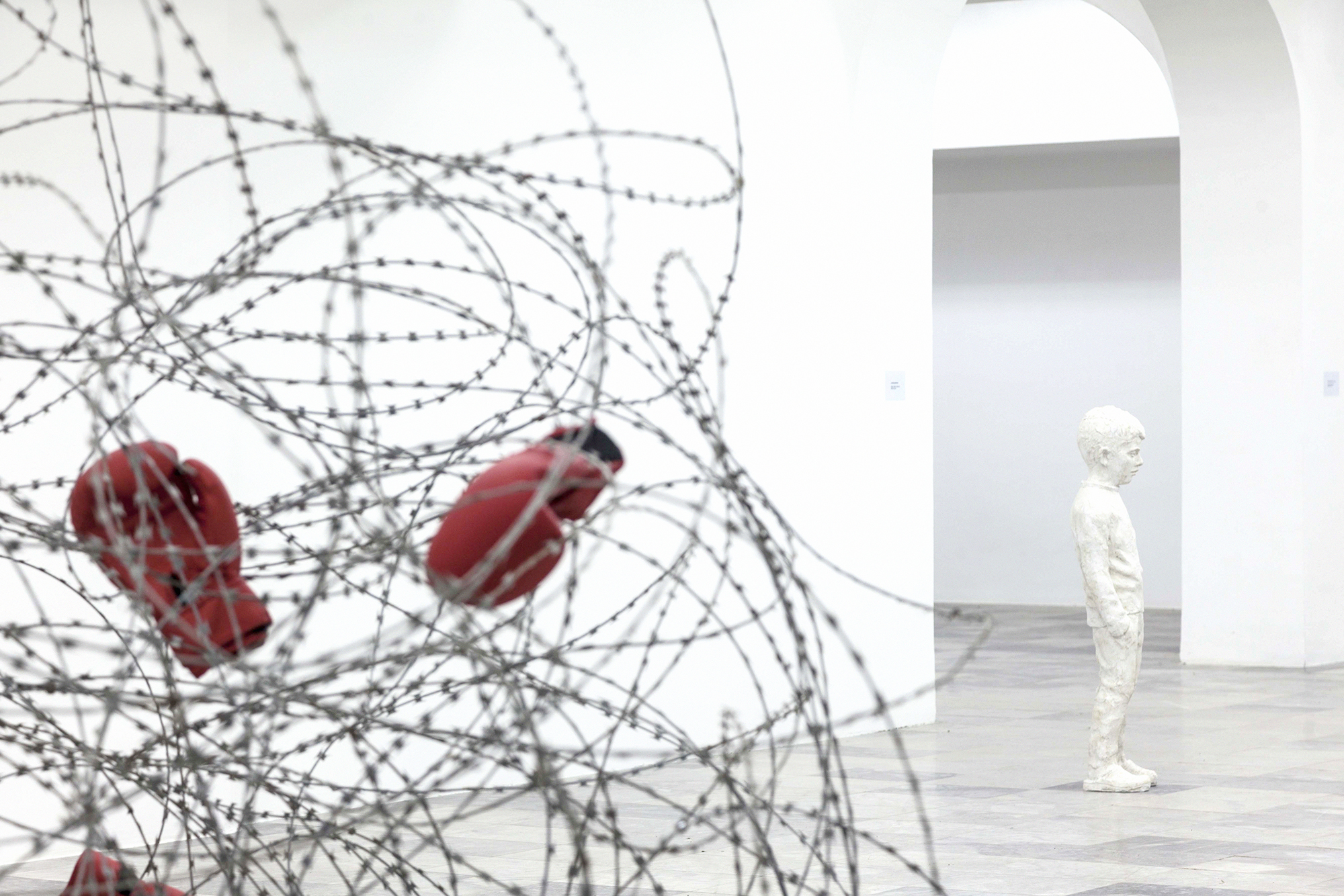When I was first invited to visit Kosovo, in January 2018, the plane could not land because of the thick fog. This set well with the joke I had for Kosovo - that it does not exist – which began when I found out that Israel does not recognize the sovereignty of Kosovo. What does it mean to be a partially recognized state as Kosovo is? What does it mean to be a territory under dispute? I suggested curating an exhibition that doesn’t exist, with artists that do not exist, in a gallery that doesn’t exist. Funny enough I saw an older work by Driton Selmani, titled Tell me Where I am From? (2012). The work was made while Selmani was staying in a residency program in the UK where he asked nine of the residents, artists from different places in the world (Brazil, Poland, Portugal, Japan, Cyprus, Ireland and the UK), to draw a map of Kosovo and its location in the world map. The answers were far from reality, including one that thought that Kosovo was an Island and another that named the state Kosobo. Alongside the nine different maps that the residents drew, Selmani’s mom used, at his request, a needle embroidery on fabric to create an image of the world’s map where Kosovo is missing, like a hole in the globe. Yet the metaphor of “an exhibition that doesn’t exist, with artists that do not exist, in a state that does not exist” asked to open a sphere of political imagination where anything is possible and anything can happen. Where one does not have to obey any rule or category of reality, not even gravity! It asked us to think about the National Gallery of Kosovo as a non-place or an ex-territory, a hallucinatory sphere that exists outside of the radar and can open new points of view and new ways of acting in our ambiguous reality.
Driton Selmani’s The Raw and the Cooked (2018), a sculpture that puts together barbed wire and red boxing gloves, borrows its title from an important essay by anthropologist and philosopher Claude Lévi-Strauss. In the well-known introduction to this book, Lévi-Strauss writes that “certain categorical opposites drawn from everyday experience with the most basic sorts of things — e.g. ‘raw’ and ‘cooked,’ ‘fresh’ and ‘rotten,’ ‘moist’ and ‘parched,’ and others — can serve a people as conceptual tools for the formation of abstract notions and for combining these into propositions.” In a similar move, though on a smaller scale, Selmani also shows Untitled (2018) – a small sculpture that is composed of a very large knife, made on the artist’s request in traditional techniques and a huge eraser on the other end, thus putting on the surface three related ideas: doing, undoing and redoing.
Another work by Driton Selmani is Untitled Union (2012) – a red flag which is in fact a collage textile cut of flags from ex-Yugoslavia countries. This huge red flag is not only challenging the relations between the concepts of identity and belonging, but also points on the meaning of colors within collective memory.
Text: Avi Lubin
FOG / National Gallery of Kosovo
17.05.2018—17.06.2018
